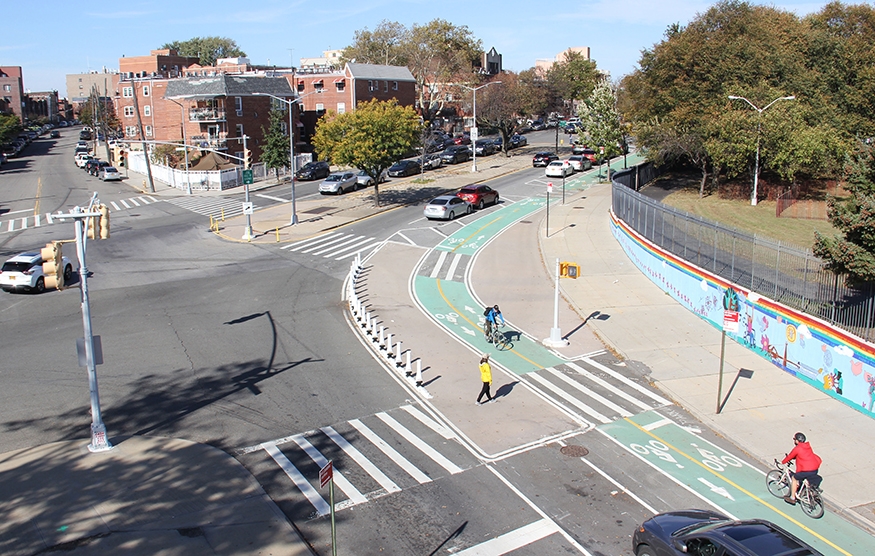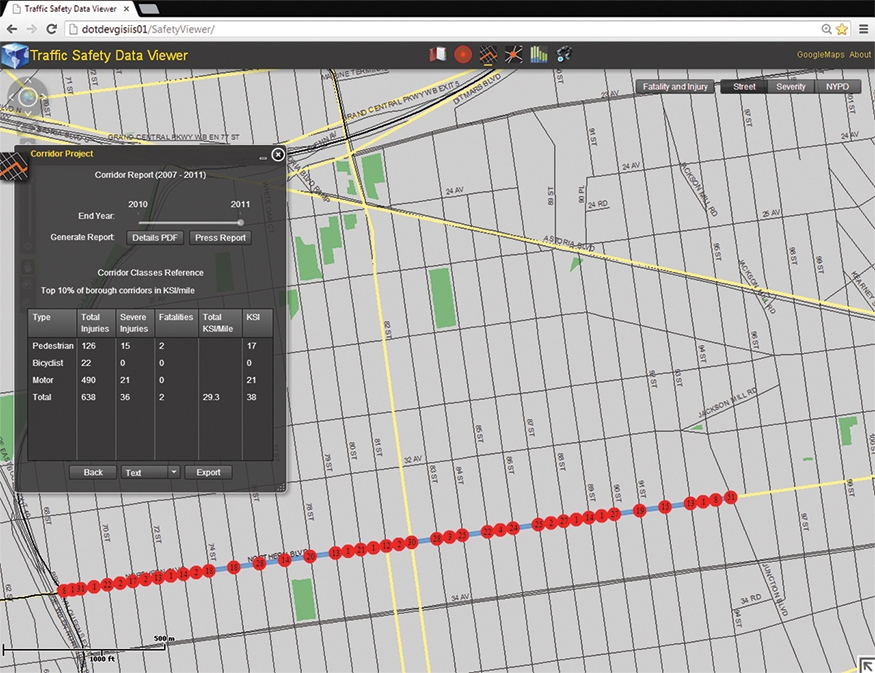

Origination
Operational projects can originate as a result of one or more of the following:
- A DOT citywide safety initiative, such as Vision Zero, identifies an area in which to make safety enhancements based on crash data and other factors
- As is the case with the development of the bicycle lane network or Select Bus Service routes and many other projects, a DOT unit leads a citywide or neighborhoodlevel planning process that identifies modifications
- Another city agency’s project, such as a DCP neighborhood rezoning or planning study, creates an opportunity for DOT to make cost-effective enhancements in the course of the project
- Elected officials provide funding for a project
- Elected officials, the general public, business improvement districts, other agencies, or Community Boards request certain treatments or ask DOT to investigate conditions
- Non-profit organizations with community support apply to DOT’s NYC Plaza Program to convert underutilized ROW into public spaces
Planning & Design
Scoping (1–4 Months)
DOT plans and designs most of its Operational projects rather than engaging a consultant to do so. When it begins to plan a project, agency staff conduct site visits, talk to stakeholders, and collect appropriate information, which typically includes some or all of the following:
- Crash data
- Traffic speeds
- Pedestrian, bicycle, and motor vehicle volumes
- Turning-movement counts
- Parking utilization
- Contextual information, particularly local land uses, parking regulations, bus/truck route information, etc.
- Inventory of existing infrastructure, such as fire hydrants, storm drains, manholes, sidewalks and curbs, curb cuts, etc.
- Relevant demographic data, such as high proportions of older adults and/or people with disabilities
Goals and preliminary design concepts often emerge from initial data collection and information from stakeholders.
Design (6–12 Months)
DOT assesses the project site and creates a base map to establish existing conditions. Agency staff then design enhancements that meet project goals. DOT may collect additional information as the project is developed if other nearby intersections are determined to be in need of modification.
DOT consults with FDNY to address any concerns about the impact of the designs on its operations. The agency may also present the preliminary concepts to the relevant Community Board and elected officials for input. If the project is a major transportation project, as defined in section 101.2 of the New York City Administrative Code, DOT also consults with NYPD, SBS, and MOPD. DSNY is consulted when a design might impact its operations. Designs for all works of art and structures intended for use in a fixed location for more than one year are subject to PDC review.
In some cases, if DOT contemplates making changes to signal timing or narrowing or removing lanes, the agency uses computer modelling to anticipate future conditions and adjust the plan or make improvements as needed.
Implementation (1 week to 4 months)
Once a project design is completed, the relevant DOT units and/or outside contractors implement the project. The construction season is usually between mid-April and mid-November.
DOT staff monitor and analyze crash data at the project site for up to three years after implementation. DOT also compares pre- and post-implementation motor vehicle, bicycle, and pedestrian data to determine what impact, if any, the project had on mobility. If issues arise out of this analysis, DOT may revisit the project to make modifications. DOT is increasingly measuring other project-performance indicators as well, such as economic and environmental impacts.

